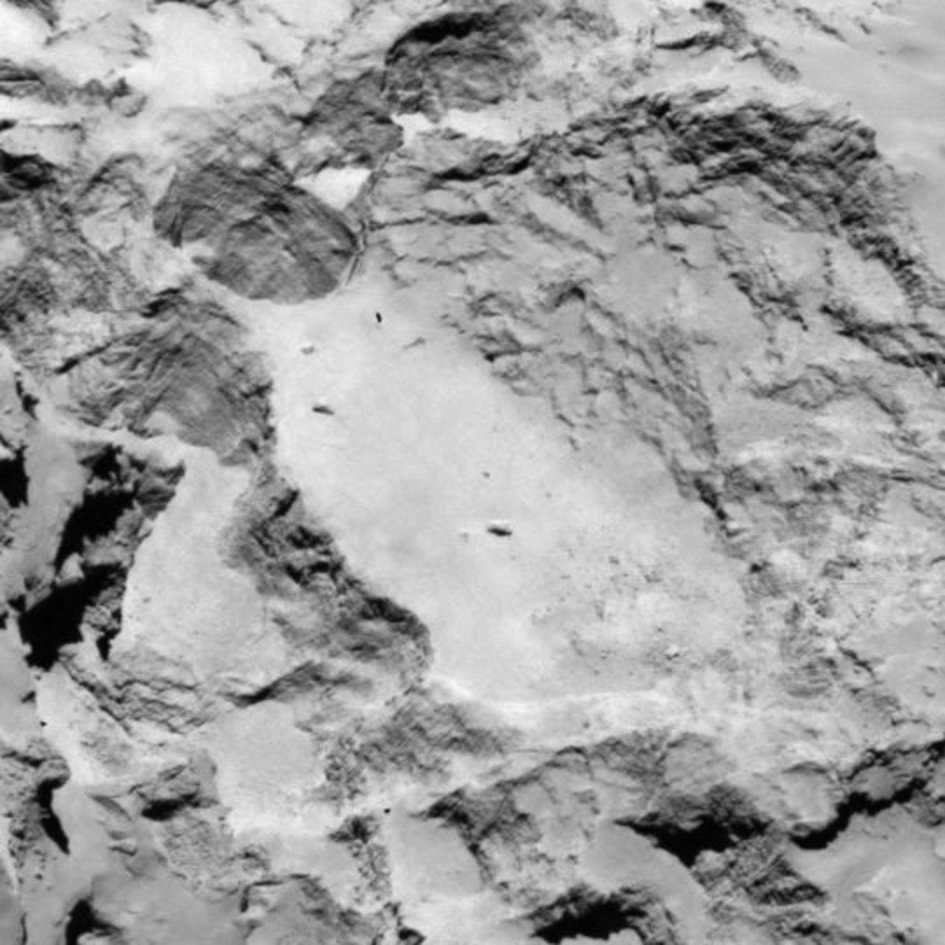European Space Agency's Rosetta Identifies Five Potential Sites for First Comet Landing
Five locations have been identified as candidate sites to set down the Philae lander on the surface of Comet 67P/Churyumov-Gerasimenko in November – the first time a landing on a comet has ever been attempted. Detailed information collected by ESA's Rosetta spacecraft during its first two weeks of orbiting around the comet have been studied to identify potential landing sites.

Choosing the right landing site is a complex process. The site must balance the technical needs of the orbiter and lander during all phases of the separation, descent and landing, and during operations on the surface with the scientific requirements of the 10 instruments on board Philae.
For each site, the following questions must be answered: Will the lander be able to maintain regular communications with Rosetta? How common are surface hazards such as large boulders, deep crevasses or steep slopes? Is there sufficient illumination for scientific operations and enough sunlight to recharge the lander's batteries beyond its initial 64-hour lifetime, while not so much as to cause overheating?
The sites were assigned a letter from an original pre-selection of 10 possible sites, which does not signify any ranking. Three sites (B, I and J) are located on the smaller of the two lobes of the comet and two sites (A and C) are located on the larger lobe. The captions on these images give a little info on each site.





The next step is a comprehensive analysis of each of the sites, to determine how Rosetta could deliver the lander to any of them. At the same time, Rosetta will move to within 50 km of the comet, allowing a more detailed study of the proposed landing sites.
By 14 September, the five candidate sites will have been assessed and ranked, and a primary landing site will be chosen, along with a backup.
During this phase, Rosetta will move to within 20–30 km of the comet, allowing for even more detailed maps of the boulder distributions at the two sites.
The Rosetta mission team are working towards a nominal landing date of 11 November.


The comet is on a 6.5-year orbit around the Sun and today is 522 million km from it. At their closest approach on 13 August 2015, just under a year from now, the comet and Rosetta will be 185 million km from the Sun, meaning an eight-fold increase in the light received from the Sun.
© Copyright IBTimes 2025. All rights reserved.






















